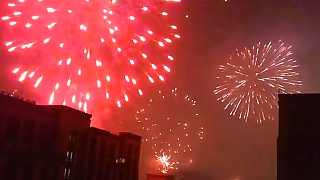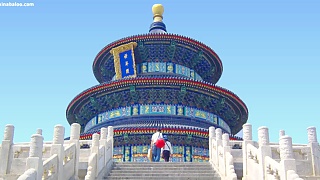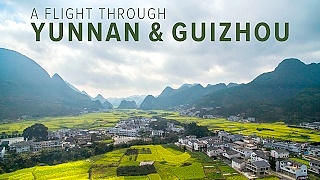With Travel East ...
[640],shadow=true,start=,stop=With China Walking Tour ...
Wuhan Dream Times Square Visitor Guide
Introduction
Wuhan Dream Times Square is a vibrant commercial and entertainment hub located in the heart of Wuhan. With its modern architecture, diverse shopping options, trendy dining venues, and exciting entertainment choices, Dream Times Square is a must-visit destination for locals and tourists alike. This guide will provide you with all the information you need to make the most of your visit to this dynamic area.
Key Attractions
1. Shopping Paradise
Dream Times Square is home to a vast array of shops, ranging from high-end luxury brands to affordable fashion outlets. Whether you're looking for the latest fashion trends, electronics, or unique gifts, you'll find something that suits your taste and budget. Some popular stores include:
- Gucci and Louis Vuitton: For those interested in luxury fashion, these flagship stores offer the latest in high-end apparel and accessories.
- UNIQLO and H&M: These well-known brands offer trendy and affordable clothing options for all ages.
- Local Boutiques: Discover unique fashion pieces and accessories from local designers in various boutiques throughout the square.
2. Entertainment Options
Dream Times Square is more than just a shopping destination. It offers a variety of entertainment options for visitors of all ages, making it a perfect spot for a day out.
- Cinema Complex: Catch the latest blockbuster movies in state-of-the-art theaters with comfortable seating and high-quality sound systems.
- VR Experience Centers: Engage in immersive virtual reality experiences, from adventure games to futuristic simulations.
- Karaoke Bars: Unleash your inner pop star at one of the many karaoke bars, a popular activity for groups of friends and families.
Dining Options
Dream Times Square offers a diverse range of dining options to satisfy every palate. From local delicacies to international cuisine, there's something for everyone:
- Chinese Cuisine: Enjoy authentic Chinese dishes at restaurants such as Huanghe Lou Dumplings and Dong Lai Shun Hotpot, which offer traditional flavors in a modern setting.
- Western and International Food: Indulge in Italian pasta, American burgers, or Japanese sushi at popular restaurants like Pizza Marzano, Blue Frog, and Sushi Express.
- Cafés and Dessert Shops: Take a break and relax with a cup of coffee or a sweet treat at Starbucks, Häagen-Dazs, or one of the many cozy local cafés scattered throughout the square.
Nightlife and Evening Entertainment
Dream Times Square comes alive at night with vibrant nightlife options. Whether you're looking for a quiet evening drink or a lively night out, you'll find plenty of choices:
- Bars and Pubs: Sip on cocktails or local brews at stylish bars like Muse Bar or Vibes Lounge. These spots offer a relaxed atmosphere with live music and stunning views of the city.
- Clubs: Dance the night away at popular clubs like Soho Club, where you can enjoy live DJs, energetic dance floors, and a vibrant social scene.
- Rooftop Lounges: For a more laid-back experience, visit rooftop lounges that offer panoramic views of the Wuhan skyline and a serene environment to unwind with a drink.
Practical Tips for Visitors
- Location: Wuhan Dream Times Square is located in the Hankou area of Wuhan, making it easily accessible from various parts of the city.
- Transportation: The square is well-connected by public transport, including buses and the metro. The nearest metro station is Jianghan Road Station on Line 2.
- Opening Hours: Most shops and attractions are open from 10:00 AM to 10:00 PM. Some restaurants and bars may stay open later into the night.
- Language: While many shop assistants and staff speak some English, it is helpful to know a few basic Mandarin phrases or use a translation app.
- Payment Methods: Major credit cards are accepted in most shops and restaurants. However, it's advisable to carry some cash or use mobile payment options like WeChat Pay or Alipay.
Wuhan, the capital city of Hubei Province in central China, is a vibrant and dynamic metropolis with a rich history, cultural heritage, and modern amenities. Situated at the confluence of the Yangtze and Han rivers, Wuhan is known as the River City and serves as a major transportation hub and economic center in China. Here's a guide to Wuhan for visitors:
Historical and Cultural Attractions:
Yellow Crane Tower (Huanghelou): This iconic landmark, dating back over 1,700 years, offers panoramic views of Wuhan and the Yangtze River. It's a symbol of the city's rich cultural heritage and is surrounded by lush gardens and scenic vistas.
Guiyuan Temple: Explore this ancient Buddhist temple, renowned for its intricate architecture, serene gardens, and impressive collection of Buddhist scriptures and artifacts.
Hubei Provincial Museum: Delve into the history and culture of Hubei Province at this world-class museum, which houses a vast collection of artifacts, including ancient artifacts from the Warring States period and exquisite bronze bells from the Spring and Autumn period.
East Lake (Donghu): Escape the urban hustle and bustle with a visit to East Lake, the largest urban lake in China. Explore its scenic walking paths, tranquil pavilions, and picturesque landscapes.
Wuhan University: Stroll through the picturesque campus of Wuhan University, one of China's most prestigious universities, known for its beautiful gardens, historic buildings, and academic excellence.
Modern Landmarks:
Yangtze River Bridge: Visit the first bridge to span the Yangtze River, a symbol of Wuhan's engineering prowess and economic significance. The bridge offers stunning views of the river and the city skyline.
Han Street (Hanjie): Explore this vibrant pedestrian street, lined with shops, restaurants, and entertainment venues. Han Street is a popular destination for shopping, dining, and nightlife, with a lively atmosphere day and night.
Culinary Delights:
Hot Dry Noodles (Re-gan Mian): Sample Wuhan's most famous dish, hot dry noodles, a simple yet delicious noodle dish served with sesame paste, chili oil, and other seasonings.
Wuhan Soup Dumplings (Jiaozi): Indulge in these savory soup dumplings, filled with flavorful broth and meat or vegetable fillings. They're a popular street food snack and can be found at markets and food stalls throughout the city.
Practical Information:
Transportation: Getting around Wuhan is convenient, with an extensive public transportation system that includes buses, the Wuhan Metro, and ferries across the Yangtze River.
Accommodation: Wuhan offers a wide range of accommodation options, from luxury hotels to budget-friendly hostels, catering to different preferences and budgets.
Language: Mandarin Chinese is the official language, but some locals may speak English, especially in tourist areas.
Safety: Wuhan is generally safe for travelers, but it's always wise to take standard precautions regarding personal belongings and travel safety.
Unique Experiences:
Cherry Blossom Festival: Visit Wuhan in spring to witness the breathtaking cherry blossoms in full bloom at Wuhan University and other scenic spots around the city.
Yangtze River Cruise: Embark on a cruise along the mighty Yangtze River, passing through picturesque landscapes, historic towns, and the famous Three Gorges.
Wuhan offers visitors a fascinating blend of history, culture, and modernity, with a diverse array of attractions, culinary delights, and unique experiences waiting to be discovered. Whether exploring ancient landmarks, strolling along scenic riverbanks, or savoring local cuisine, visitors to Wuhan are sure to be captivated by the city's charm and vitality.

Related Videos
Featured Videos

|
What it is like in a Chinese city during the Spring Festival ...
Warning - loud !
|

|
HuNan province.
|

|
A film by kinabaloo.com and BeijingBuzzz.com ...
|

|
Best month to see the yellow canola fields is March.
|

|
ZheJiang province.
|
 WuHan, HuBei province – the World’s largest shopping mall plus city night scenes
WuHan, HuBei province – the World’s largest shopping mall plus city night scenes
























